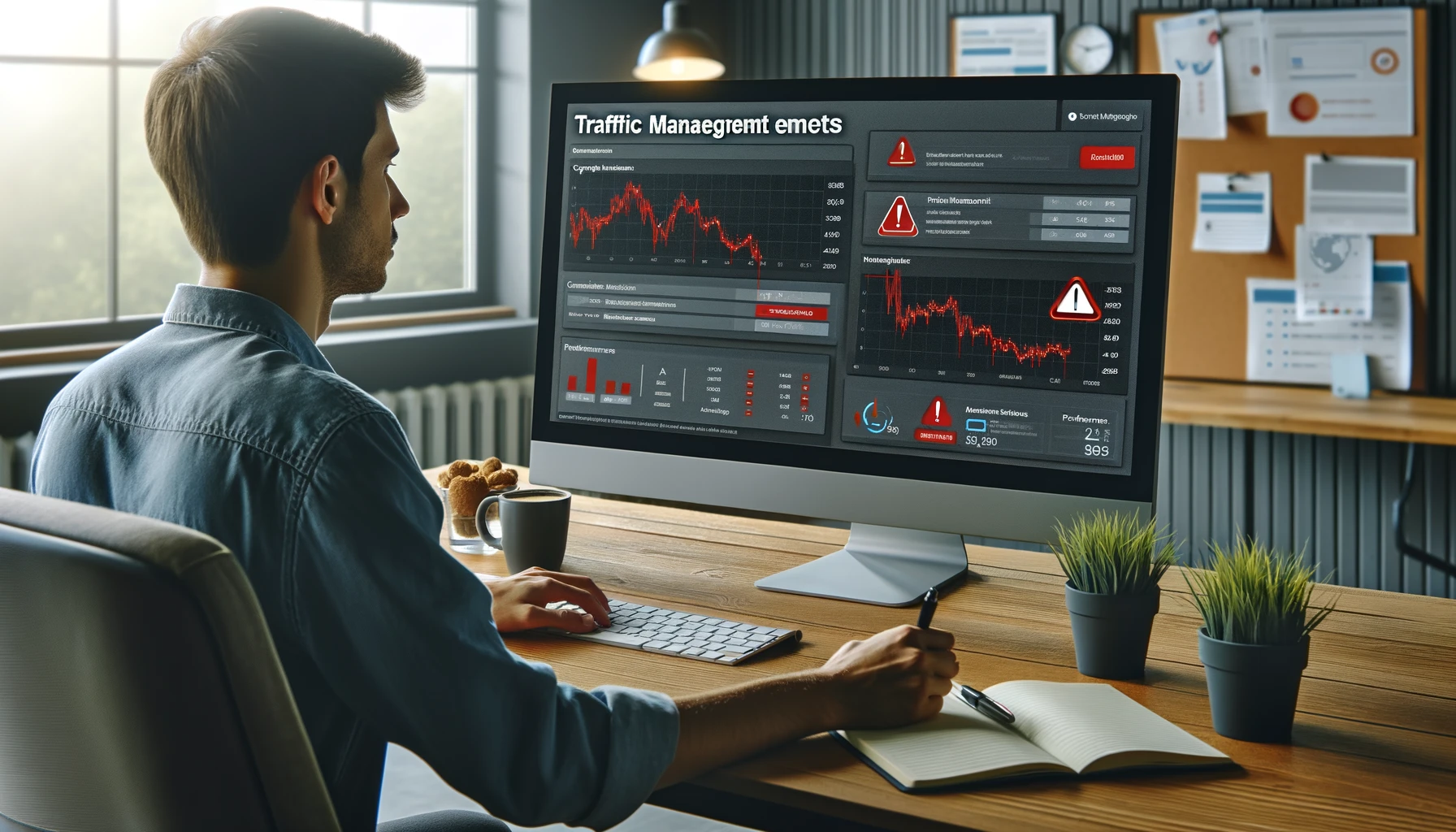Introduction
Traffic management is essential for businesses and digital marketers looking to drive visitors to their websites and increase conversions. However, beginners often make costly mistakes that hinder their results. Understanding these mistakes and knowing how to avoid them can save both time and money.
In this article, we’ll cover the most common mistakes in traffic management and provide practical solutions and recommended tools to help you optimize your campaigns effectively.
Mistake #1: Not Defining Clear Goals
The Problem:
Many beginners jump into traffic management without a clear objective. They run ads without knowing whether they want more website visits, lead generation, or direct sales.
How to Fix It:
Clearly define your KPIs (Key Performance Indicators) before starting any campaign. Use Google Analytics and Facebook Ads Manager to track key metrics. Set up conversion tracking with Google Tag Manager to measure specific actions.
Recommended Tools:
Google Analytics 4 (GA4) – Tracks website traffic and user behavior.
Google Tag Manager – Helps manage multiple tracking codes without modifying the website code.
Mistake #2: Poor Audience Targeting
The Problem:
Targeting the wrong audience leads to low engagement, high ad costs, and poor conversion rates. Many beginners use broad targeting, hoping to reach everyone.
How to Fix It:
Use Facebook Audience Insights to analyze customer demographics. Test Lookalike Audiences and Custom Audiences for better targeting. Use Google Keyword Planner to find search terms that match user intent.
Recommended Tools:
Facebook Audience Insights – Helps define detailed audience targeting.
Google Keyword Planner – Finds relevant keywords for Google Ads campaigns.
LinkedIn Insight Tag – Tracks professional audiences for B2B campaigns.
Mistake #3: Ignoring A/B Testing
The Problem:
Many beginners launch a campaign and never test different variations of their ads, landing pages, or targeting strategies.
How to Fix It:
Always run A/B tests (also called split testing) for ad creatives, headlines, and targeting options. Use heatmaps to analyze user behavior on landing pages. Adjust campaigns based on real-time performance data.
Recommended Tools:
Google Optimize – Free tool for A/B testing.
Hotjar – Provides heatmaps and session recordings.
VWO (Visual Website Optimizer) – Helps test landing page variations.
Mistake #4: Not Optimizing Landing Pages
The Problem:
Driving traffic to a poorly optimized landing page leads to high bounce rates and low conversions.
How to Fix It:
Ensure landing pages load quickly (under 3 seconds). Use clear CTAs (Call-to-Actions) like “Get Your Free Trial” or “Buy Now.” Remove unnecessary distractions and focus on one primary action per page.
Recommended Tools:
Google PageSpeed Insights – Tests website speed and provides optimization tips.
Unbounce – Helps create high-converting landing pages.
Instapage – Allows easy drag-and-drop landing page creation.
Mistake #5: Not Tracking and Analyzing Data Properly
The Problem:
Beginners often run ads without analyzing CTR (Click-Through Rate), CPC (Cost Per Click), and ROAS (Return on Ad Spend).
How to Fix It:
Monitor campaigns daily using ad platform analytics. Use UTM parameters to track specific campaigns in Google Analytics. Regularly adjust ad copy, targeting, and budget based on data insights.
Recommended Tools:
Google Analytics + UTM Builder – Tracks campaign performance.
Facebook Pixel Helper – Checks if Facebook Pixel is working correctly.
Google Data Studio – Creates advanced campaign performance reports.
Mistake #6: Not Using Retargeting Campaigns
The Problem:
Many beginners focus only on new visitors and ignore retargeting, missing out on warm leads.
How to Fix It:
Set up retargeting campaigns for people who visited your website but didn’t convert. Show specific ads to users based on their previous actions (e.g., abandoned cart recovery). Use dynamic retargeting to display products users viewed before.
Recommended Tools:
Facebook Retargeting Ads – Targets users who interacted with your website.
Google Display Remarketing – Shows retargeting ads on Google partner sites.
AdRoll – Specialized retargeting platform.
Mistake #7: Not Scaling Campaigns Correctly
The Problem:
Beginners often scale campaigns too quickly, increasing ad spend without optimizing for conversions.
How to Fix It:
Scale gradually by increasing budget 10-20% at a time. Focus on high-performing ad sets instead of spreading budget thin. Use lookalike audiences to reach similar users who are more likely to convert.
Recommended Tools:
Facebook Lookalike Audiences – Finds similar users based on existing customers.
Google Smart Bidding – Uses AI to optimize bids for better results.
Revealbot – Automates ad scaling for Facebook & Google Ads.
Conclusion
Avoiding these common mistakes can save thousands of dollars and improve campaign results. By defining clear goals, optimizing landing pages, testing ads, tracking data, and using retargeting, beginners can master traffic management faster.
Final Tips for Success:
Set up tracking pixels to monitor conversions.
Use A/B testing for continuous ad optimization.
Never increase budget too fast—scale gradually.
Leverage automation tools like Google Smart Bidding and Facebook CBO (Campaign Budget Optimization).
By applying these strategies, you’ll improve your ad performance, lower costs, and maximize results.
